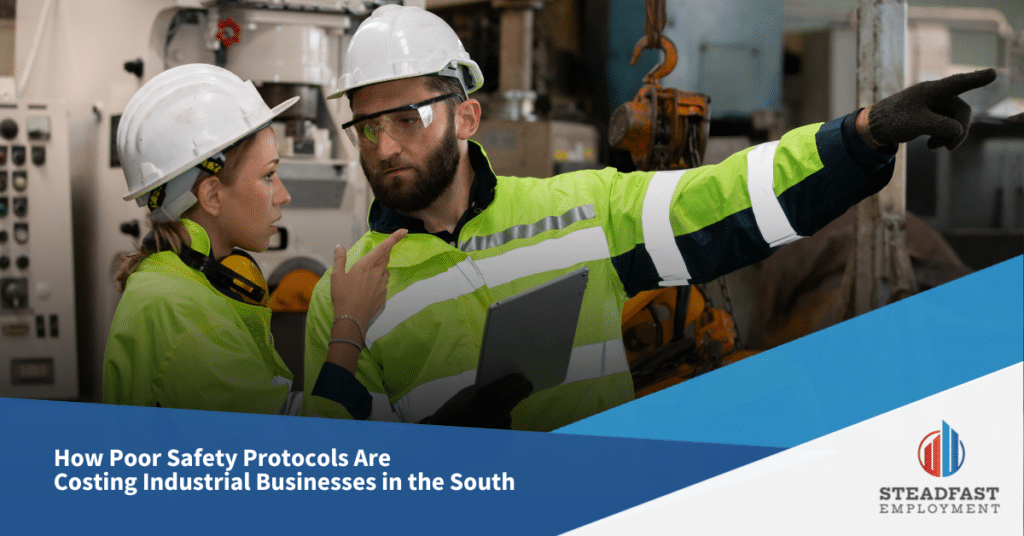For industrial businesses in the South—ranging from chemical plants along the Gulf Coast to manufacturing facilities in Mississippi and shipyards in Louisiana—workplace safety is a cornerstone of operational integrity. Yet many companies still underestimate the far-reaching consequences of inadequate safety measures. Failing to prioritize safety can lead to more than just a spike in injury rates; it can also damage the company’s reputation, strain labor relations, and hit profit margins hard. If you’re a hiring manager focused on maintaining a productive workforce, it’s crucial to understand exactly how poor safety protocols can harm your bottom line—and what you can do about it.
The Direct Financial Costs of Poor Safety Protocols
When a worker is injured on the job, the immediate consequences are clear: medical costs lost productivity, and potential workers’ compensation claims. These expenses add up quickly. According to data from OSHA, businesses pay billions of dollars each year in direct and indirect costs related to workplace injuries. For industrial firms operating on tight margins or relying heavily on seasonal labor, even a single severe injury can disrupt production schedules and erode profits.
Reputation and Compliance Risks
The South is seeing growth in complex industrial projects, and reputation matters more than ever in attracting top-tier talent. Workers increasingly prefer employers known for strong safety records. When word spreads that a company is lax in its safety standards, it can discourage skilled candidates from applying. Also, repeated violations can trigger enhanced OSHA scrutiny and potentially hefty fines. Over time, these compliance issues can tarnish a company’s image in the industry, making it harder to compete for both skilled labor and high-value contracts.
Productivity Losses and Workforce Turnover
Unsafe working conditions contribute to higher turnover rates—injured employees may need extensive time off, and team morale can suffer when colleagues witness or experience preventable accidents. High turnover rates mean hiring managers must invest more time and resources into recruiting and training new employees. A workforce that doesn’t feel safe is less engaged and less productive. Distractions caused by fear, stress, and low morale can slow down output and lead to more errors, costing even more in long-term productivity.
Insurance Premium Hikes
Industrial companies with poor safety records often face steeper insurance premiums. Over time, these increased costs can be substantial, leaving fewer funds available for expansion, innovation, or wage increases. In a tight labor market, that can mean losing out on top candidates who seek employers offering better pay and benefits—further complicating the recruitment process.
Prioritize Workplace Safety Protocols
As a hiring manager, you have a unique influence over the talent pipeline that supports a company’s safety culture. Start by recruiting candidates who prioritize safety—those who are OSHA-certified, have a history of adhering to safety protocols, or demonstrate a willingness to learn. Partner with your HR and operations teams to offer ongoing training, ensuring that all employees—from entry-level workers to seasoned supervisors—remain current on best practices. Invest in clear, consistent communication about safety standards during onboarding. Promote transparency and encourage employees to voice concerns about hazards. By making safety a core part of your company’s culture, you can reduce injury rates, lower costs, and create an environment where everyone thrives.
In the South’s competitive industrial landscape, poor safety protocols are too costly to ignore. Addressing them proactively isn’t just good for employees—it’s a sound business strategy that benefits your company’s reputation, productivity, and bottom line.
Are you ready to find top talent in manufacturing? Request an employee today.

